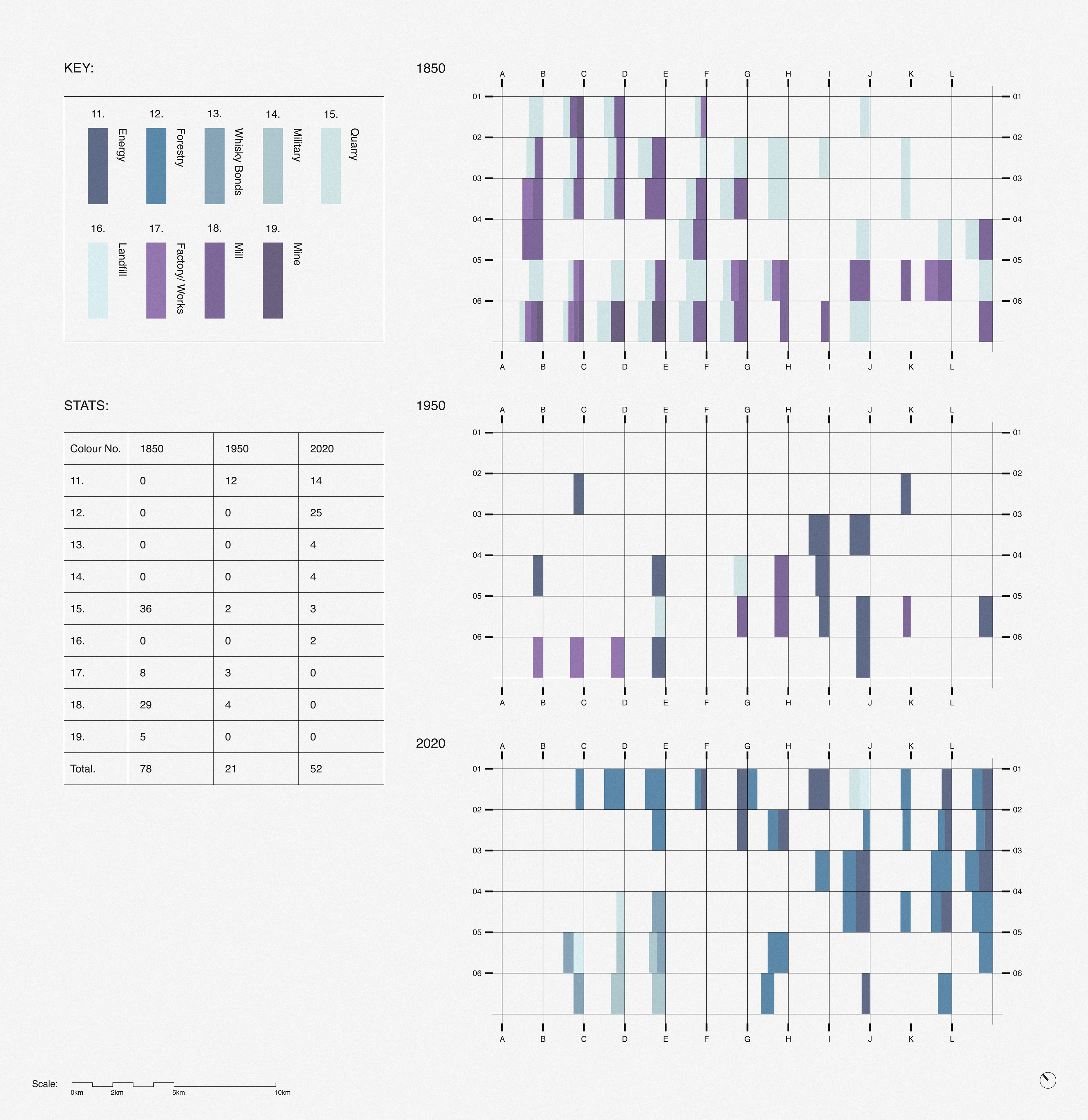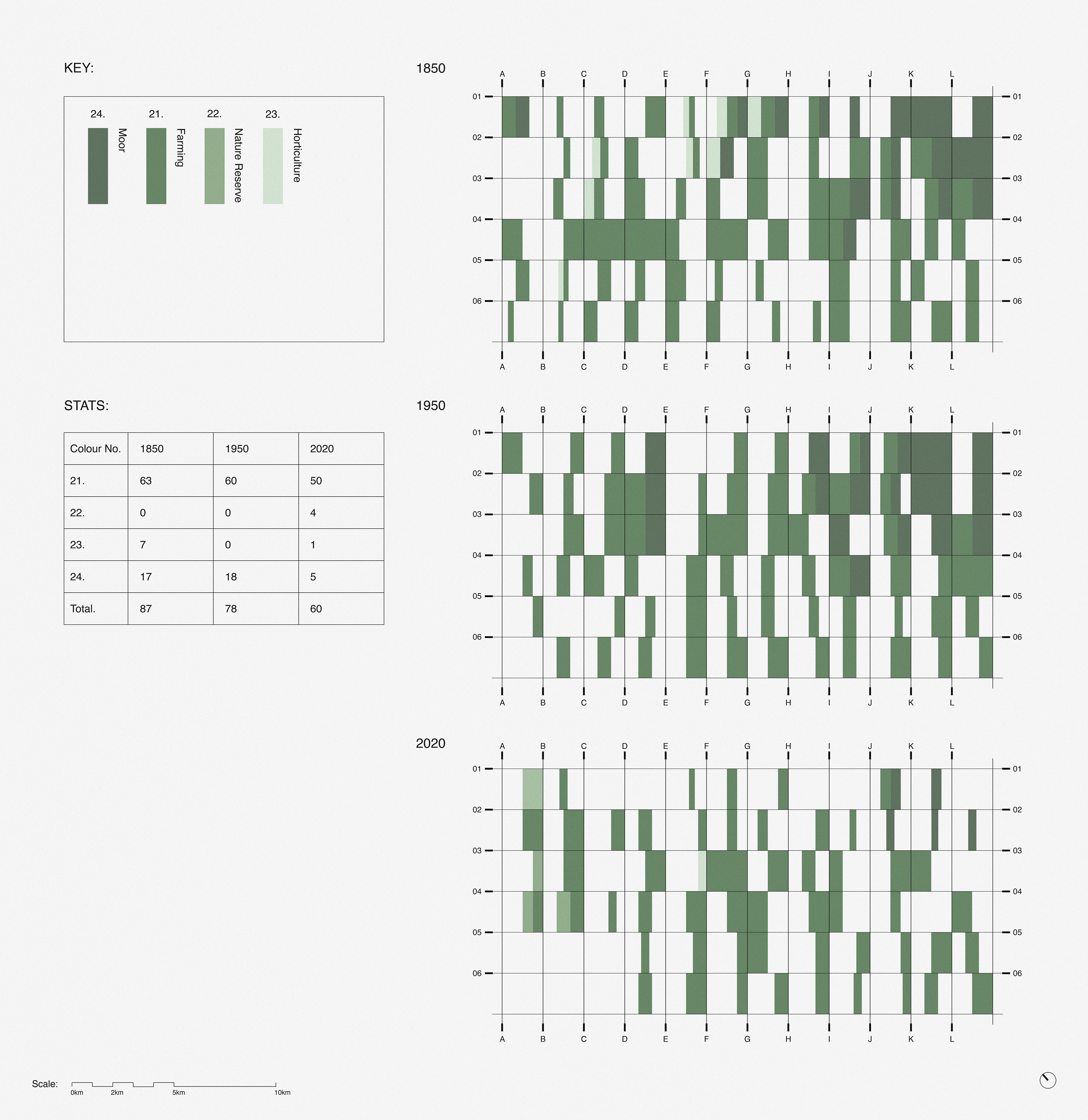








Welcome To The Countryside
“Humans are the protagonists of this tale. There is the city on one side, the countryside on the other and people in between. Thanks to “human industry”, the first becomes a “gold mine” and the second becomes “one huge kitchen garden”. The landscape... is an entirely artificial machine, wherein the city and the countryside are two poles controlled by humans with nature as the fuel. This machine transforms the natural environment into human territory.”
The Anthropocene as described by Paolo Carpi in his essay ‘Compost’ became the genius for this project. Mans ability to shape, organise, engineer and then reshape the landscape as a means for production to meet the demands on food, energy and natural resources that society requires in order to thrive has been difficult to understand through traditions maps. To be able to understand how humans have structured these non-urban territories will allow us to predict and restructure them in such a way to reduce humans impact on the landscape.
We call these landscapes ‘Countryside’, a vague and amorphous term for a diverse collection of activities and land uses. The relationships we build with these landscapesare not static but permanently in flux.
The Anthropocene as described by Paolo Carpi in his essay ‘Compost’ became the genius for this project. Mans ability to shape, organise, engineer and then reshape the landscape as a means for production to meet the demands on food, energy and natural resources that society requires in order to thrive has been difficult to understand through traditions maps. To be able to understand how humans have structured these non-urban territories will allow us to predict and restructure them in such a way to reduce humans impact on the landscape.
We call these landscapes ‘Countryside’, a vague and amorphous term for a diverse collection of activities and land uses. The relationships we build with these landscapesare not static but permanently in flux.
It is this constant change which gives these landscapes their individual character and terroir.
This project investigates these ideas by looking at a specific area of ‘countryside’ south west of Glasgow, formally known as Cunninghame. The project observes how, over the last two hundred years, man has reshaped this territory to fit the needs of its populous. The aim is to understand how this area is currently structured and how it has been structured in the past in relation to industry, infrastructure, agriculture, recreation and urban development. So that we may understand patterns and trends to give us the ability to make predictions about the future changes that may occur.
In order to reveal new ways of viewing this landscape this project required novel methods of mapping land uses to illustrate the changes that have taken place and reveal new ways of viewing maps to unveil hidden information. By looking at this piece of countryside over three snapshots in time; 1850 in the middle of the industrial revolution; 1950 at the beginning of the information age and 2020 perhaps at the beginning of a new ‘green industrial revolution’
This project investigates these ideas by looking at a specific area of ‘countryside’ south west of Glasgow, formally known as Cunninghame. The project observes how, over the last two hundred years, man has reshaped this territory to fit the needs of its populous. The aim is to understand how this area is currently structured and how it has been structured in the past in relation to industry, infrastructure, agriculture, recreation and urban development. So that we may understand patterns and trends to give us the ability to make predictions about the future changes that may occur.
In order to reveal new ways of viewing this landscape this project required novel methods of mapping land uses to illustrate the changes that have taken place and reveal new ways of viewing maps to unveil hidden information. By looking at this piece of countryside over three snapshots in time; 1850 in the middle of the industrial revolution; 1950 at the beginning of the information age and 2020 perhaps at the beginning of a new ‘green industrial revolution’
